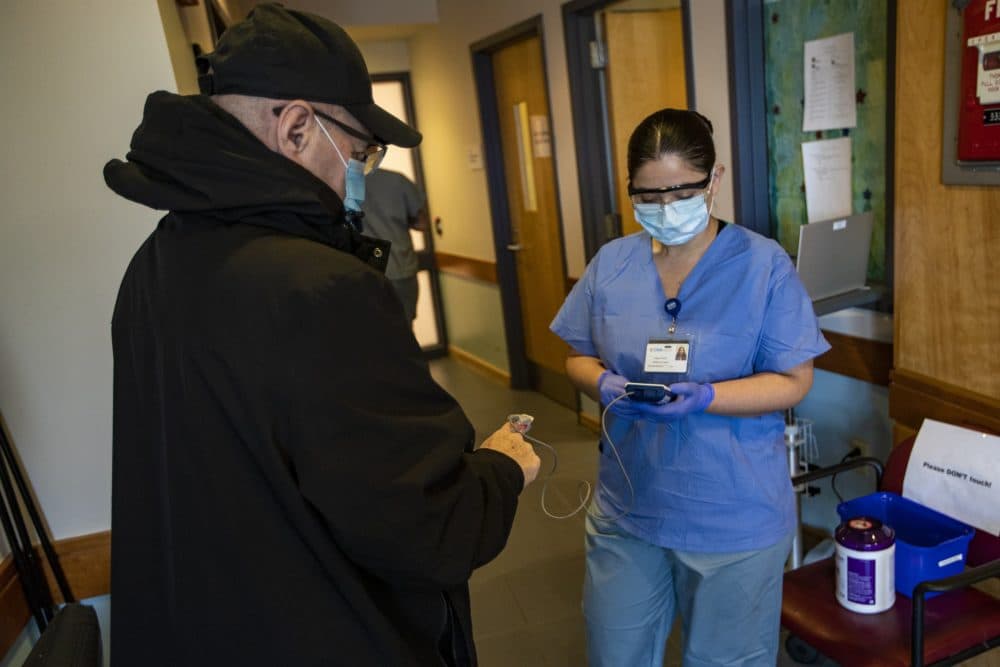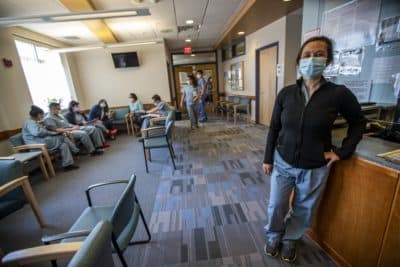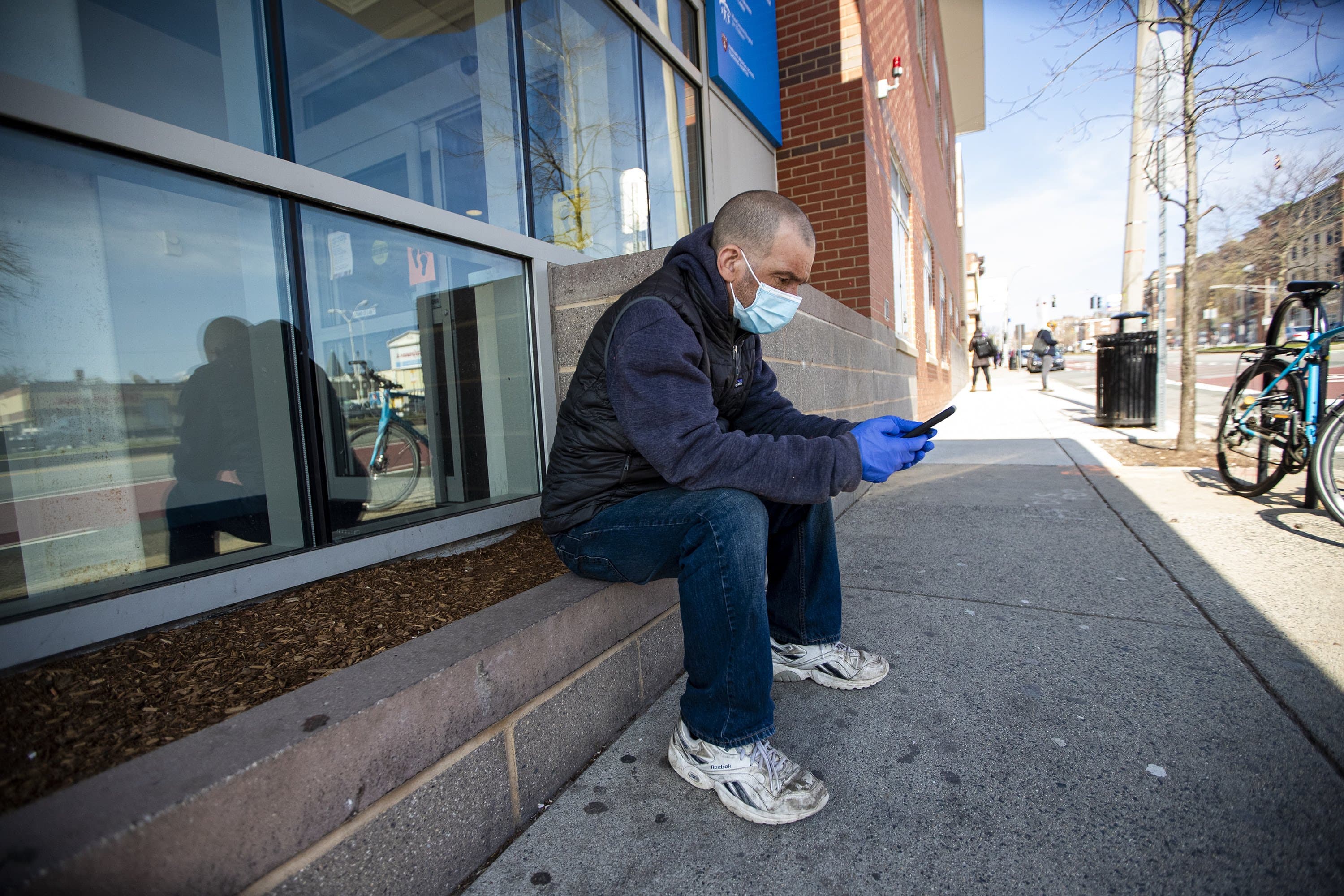Advertisement
After Hundreds Of Patients In Somerville COVID-19 Clinic, A Turning Point Comes Clear
Resume
"If you were a patient, we'd enter one at a time," says Janice John, medical director of the specialized COVID-19 respiratory clinic in Somerville.
As she leads a new nurse on a tour past a sign that says, "Stop! Please wait here," she explains that as soon as patients walk in the door, they're given a mask and greeted by a medical assistant who can take their temperature and check their oxygen level immediately. Then the patients move on to be examined and treated, and counseled about how they and their families should handle the coronavirus.
The Cambridge Health Alliance clinic opened just over a month ago and sees about 100 confirmed and suspected-COVID-19 patients a day, from a community that’s mostly working class, with many immigrants.
The staffers help scared patients feel safer, they say, enabling many to stay home under supervision and getting those who need more care to the hospital. And as the clinic treats them, it is also quickly accumulating knowledge, including about what appears to be a pivotal point in how COVID-19 develops.
The clinic these days has "a lot of compassion and care for the patient, for the community," says internist Gerard Coste, "and also a lot of curiosity in terms of trying to learn more about this disease and trying to save lives."

Doctors from the clinic have just published a paper that highlights a pattern they’ve noticed among their many hundreds of patients. Dr. Jessamyn Blau, who oversees COVID-19 outpatient care, describes it as shortness of breath that comes on days after other viral symptoms like fever and cough.
"Over the past several weeks, it’s become very apparent to us that there’s what we’re calling a turning point at days four through nine," she says.
Another Cambridge Health Alliance doctor, Pieter Cohen, explains in educational videos that it could be that the majority of COVID-19 patients develop at least some shortness of breath — also known by the medical term “dyspnea" — a finding that jibes with Chinese data as well.
Some of these patients will do so poorly they may need to go to the hospital. "We also know there are many patients, and hopefully it will turn out to be the majority of patients who develop dyspnea, who will have a stable clinical course," he says.
With no easy way to predict which patients will go rapidly downhill, the COVID-19 clinic tries to keep a close eye on them — or rather, a close ear, because the vigilance is exercised mostly by phone.
Patients get a lot of inquiries like this one from a recent call with Dr. Gaurab Basu: "And are you finding that you’re not able to do any kind of activities today, like walk up the stairs or walk around your house, which is different than the last few days?"
On one of the clinic's hundreds of such calls a day, physician assistant Kelly Goncalves became concerned about a COVID-19 patient, a 50-year-old Brazilian woman who had shortness of breath. The breathing issue seemed stable at first, but then got worse.
"I did have her walk in her house a few steps from her bed to the bathroom and back, and she was really panting for air," Goncalves says. "The entire time I was speaking to her, she was only able to say yes or no, or maybe two words of an answer."
So Goncalves asked her to come in to the respiratory clinic, where her oxygen level was found to be so low she was sent to the hospital.
"After that she was admitted," Goncalves says. "She was actually discharged today, so that’s good news. But she was admitted for a little bit over a week."
That patient was the exception. The clinic is finding that 90% of its COVID-19 patients can stay home, with careful monitoring that sometimes includes a pulse oximeter — a small device that can measure oxygen levels when clipped to a patient’s finger.
And the staff is continuing to gather and share other findings on how to manage COVID-19, and how this new disease behaves.
Dr. Jessamyn Blau says that, for example, now that it’s clear that late-onset shortness of breath is often a key turning point, the next question is what to do about it, in the absence of the usual official medical guidelines.
"Those are things that may come from clinical practice faster than they come from the literature right now," she says, "because that’s how things work in a pandemic."

This segment aired on April 24, 2020.
